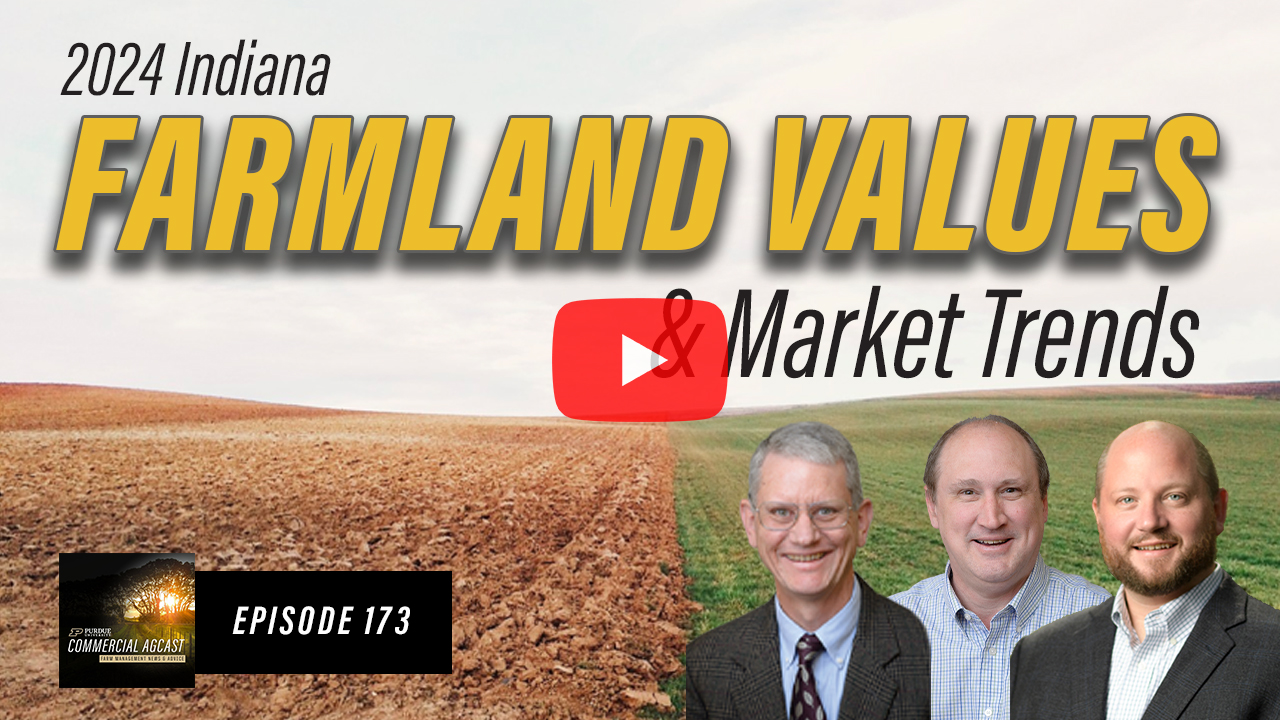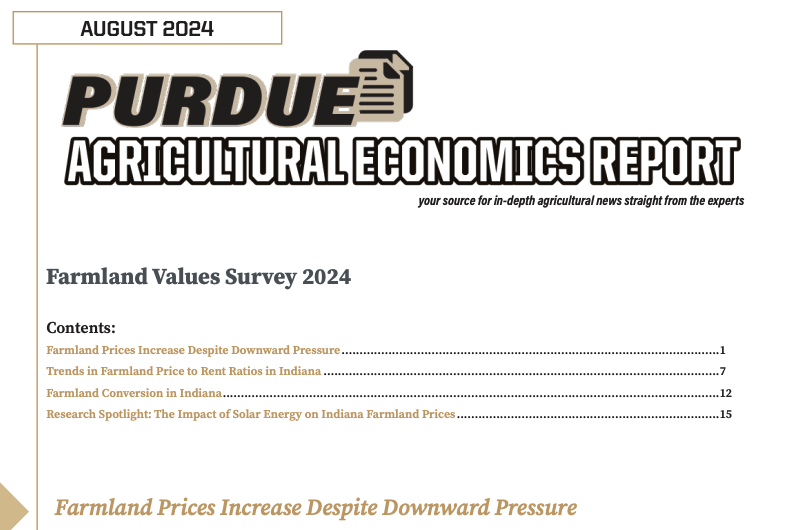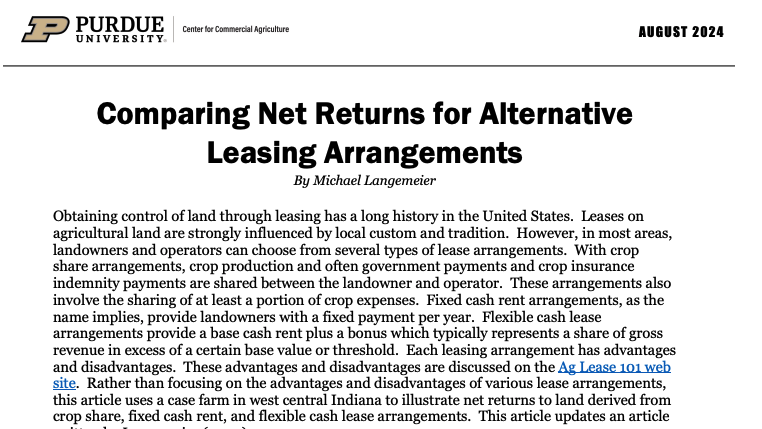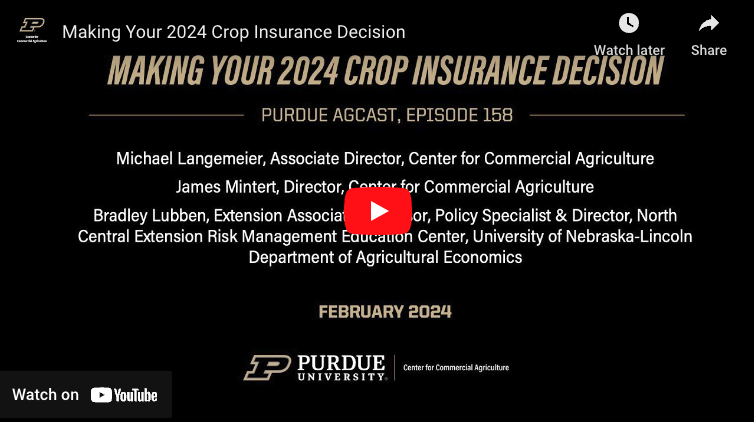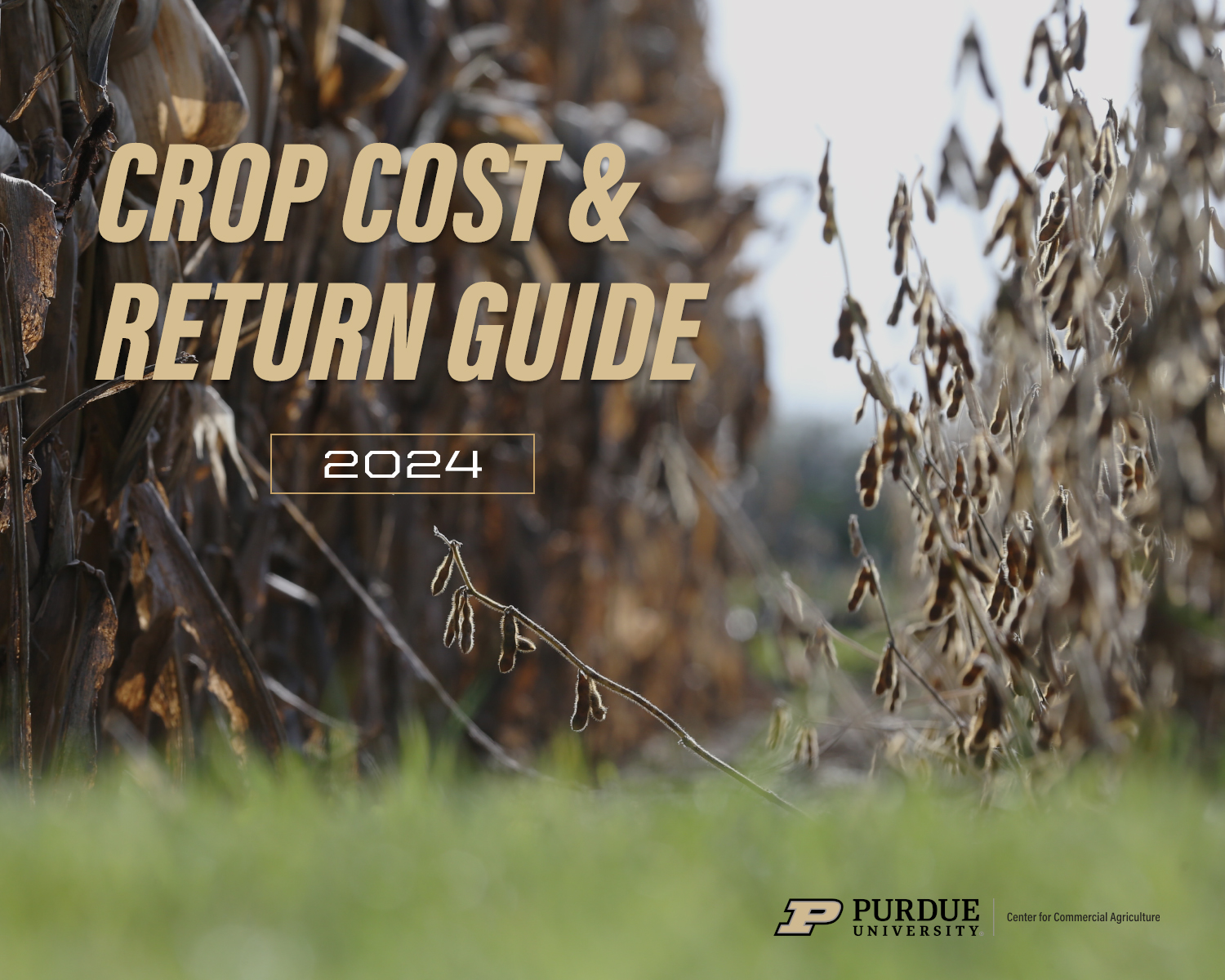Exploring the Organic Grain Industry: Challenges and Opportunities
In this episode of the Purdue Commercial AgCast, Chad Fiechter hosts Michael O’Donnell, a regional manager at Belltown Farms, who focusing on converting conventional farms to organic. Michael shares insights on crop rotations, equipment, personnel, and market demands, emphasizing the shift towards domestic organic grain production. The episode concludes with optimism for the future of organic farming and Michael’s dedication to promoting sustainable agriculture.
Read MoreNorthern Indiana Corn Basis Begins Weaker, but Narrows Gap with Southern Indiana as Harvest Proceeds
Through the first month of the 2024-2025 marketing year, two distinct patterns in Indiana corn basis have emerged. First, basis levels in the Northern and Eastern parts of the state began September significantly lower than those in Southern Indiana. The second trend involved changes in regional corn basis through September.
Read MoreThe 2024-25 Financial Downturn: Who is the Most Vulnerable
Midwest crop producers have experienced a significant downturn in corn, soybean, and wheat prices since the beginning of the year and farm incomes are expected to be much lower in 2024 than they have been the last three to four years. Moreover, current expectations are that prices will continue to remain at or below the cost of production for at least a couple more years. Consequently, a key question being asked is as follows: “who is the most vulnerable financially during this downturn”?
Read MoreFarmer Sentiment Reaches Lowest Levels Since 2016 as Income Expectations Weaken
The Purdue University/CME Group Ag Economy Barometer recorded its lowest readings since March 2016 in September. Declining income expectations pushed farmer sentiment down as the barometer fell 12 points to 88. Purdue ag economists James Mintert and Michael Langemeier share some insight into the results of the September 2024 Ag Economy Barometer survey on this Purdue Commercial AgCast episode.
Read More(Part 2) 2024 Indiana Cash Rent Trends
Negotiating cash rental rates? This AgCast episode explores 2024 farmland cash rent trends in the Purdue Farmland Value and Cash Rental Rates survey and long-term trends in Indiana cash rental rates, including an examination of regional variation in rates within Indiana. The discussion concludes by examining the relationship between cash rental rates and estimated net returns to land as well as the long-term farmland price to cash rent ratio.
Read MoreConnecting Soil Health to Economics: A Look at Balancing Farm Goals
Michael Langemeier presented at the Regional Conservation Finance Ag Educator Training in Arlington, WI on September 16, 2024, on connecting soil health to economics and looking at formulating and priortizing farm goals.
Read MoreThe Economics of Reduced Tillage and Cover Crops: Exploring Aggregated Data
Michael Langemeier presented at the Regional Conservation Finance Ag Educator Training in Arlington, WI on September 16, 2024, on the economics of reduced tillage and cover crops.
Read More(Part 1) 2024 Indiana Farmland Values & Market Trends
Interested in the latest trends and insights on U.S. & Indiana farmland values? This AgCast episode shares insights from the Farm Sector Balance Sheet, USDA data collection methods, regional variations in land values, and the influences of factors such as interest rates and development pressures on farmland prices. Gain an in-depth understanding of trends, market dynamics, and future expectations for farmland values.
Read MoreCrop Basis Levels Finish Weaker Than Recent Years
Looking back on last year, the importance of understanding how basis affects your marketing plan is evident. Basis levels for corn and soybeans peaked at different times during the 2023-2024 marketing year. Preparing for the Fall 2024 harvest, basis levels continue to be below the three-year trend. To check your up-to-date local basis levels throughout harvest this fall, visit Purdue Center for Commercial Agriculture Crop Basis Tool.
Read MoreTrends in Corn Plant Populations
Explore key trends in corn plant populations across Iowa, Illinois, and Indiana, revealing a steady 1 percent annual increase from 1996 to 2023. With Illinois leading the charge, corn populations rose significantly from 24,200 to 32,400 plants per acre, influencing both seed costs and farm budgets. Discover how understanding the interplay between seed prices and plant population can enhance your farm’s productivity and budgeting strategies.
Read MoreFollow @PUCommercialAg to see the latest farm management news.
Find out where we will be presenting next as we collaborate with others.






